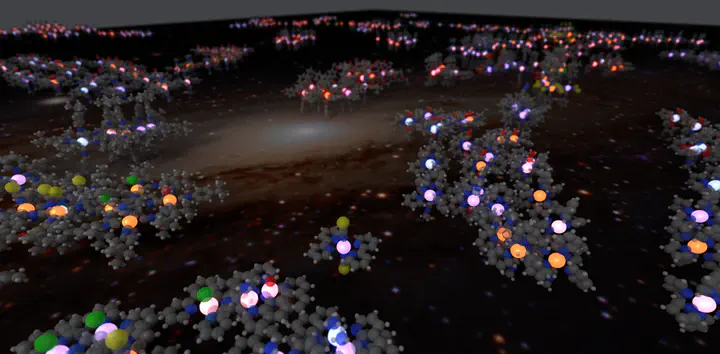Navigating Transition-Metal Chemical Space: Artificial Intelligence for First-Principles Design

Abstract
The variability of chemical bonding in open-shell transition-metal complexes not only motivates their study as functional materials and catalysts but also challenges conventional computational modeling tools. Here, tailoring ligand chemistry can alter preferred spin or oxidation states as well as electronic structure properties and reactivity, creating vast regions of chemical space to explore when designing new materials atom by atom. Although first-principles density functional theory (DFT) remains the workhorse of computational chemistry in mechanism deduction and property prediction, it is of limited use here. DFT is both far too computationally costly for widespread exploration of transition-metal chemical space and also prone to inaccuracies that limit its predictive performance for localized d electrons in transition-metal complexes. These challenges starkly contrast with the well-trodden regions of small-organic-molecule chemical space, where the analytical forms of molecular mechanics force fields and semiempirical theories have for decades accelerated the discovery of new molecules, accurate DFT functional performance has been demonstrated, and gold-standard methods from correlated wavefunction theory can predict experimental results to chemical accuracy.The combined promise of transition-metal chemical space exploration and lack of established tools has mandated a distinct approach. In this Account, we outline the path we charted in exploration of transition-metal chemical space starting from the first machine learning (ML) models (i.e., artificial neural network and kernel ridge regression) and representations for the prediction of open-shell transition-metal complex properties. The distinct importance of the immediate coordination environment of the metal center as well as the lack of low-level methods to accurately predict structural properties in this coordination environment first motivated and then benefited from these ML models and representations. Once developed, the recipe for prediction of geometric, spin state, and redox potential properties was straightforwardly extended to a diverse range of other properties, including in catalysis, computational “feasibility”, and the gas separation properties of periodic metal–organic frameworks. Interpretation of selected features most important for model prediction revealed new ways to encapsulate design rules and confirmed that models were robustly mapping essential structure–property relationships. Encountering the special challenge of ensuring that good model performance could generalize to new discovery targets motivated investigation of how to best carry out model uncertainty quantification. Distance-based approaches, whether in model latent space or in carefully engineered feature space, provided intuitive measures of the domain of applicability. With all of these pieces together, ML can be harnessed as an engine to tackle the large-scale exploration of transition-metal chemical space needed to satisfy multiple objectives using efficient global optimization methods. In practical terms, bringing these artificial intelligence tools to bear on the problems of transition-metal chemical space exploration has resulted in ML-model assessments of large, multimillion compound spaces in minutes and validated new design leads in weeks instead of decades.